Are Pigeons Protected in California?
Birds in general, are safeguarded by various regulations that aim to conserve wildlife and maintain biodiversity in California.
Pigeons, frequently regarded as typical birds, have been integral to California’s rich ecological tapestry for quite some time. Yet, their existence has sparked debate and worries among residents regarding how they are safeguarded by regional legislation.
Federal or state statutes in California do not protect feral pigeons and they are not considered fully protected birds.
However, the Band-tailed pigeon, which is California’s only native pigeon, is a treasured wildlife species and is protected by the state.
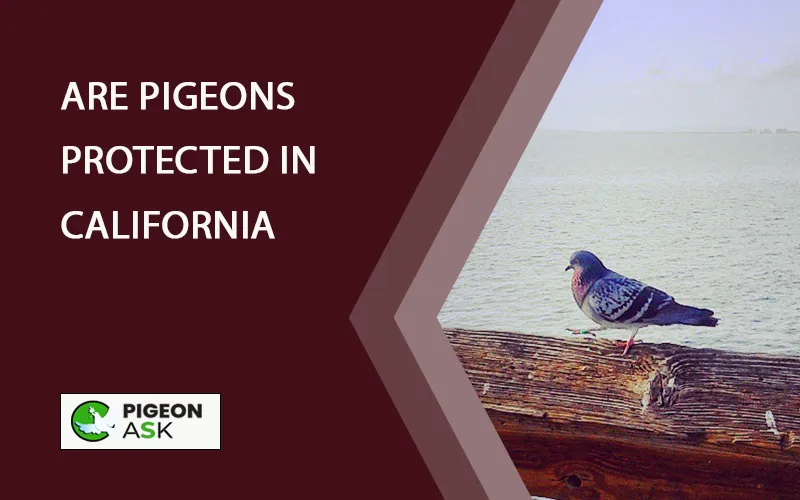
This article will explore the status of pigeon protection in California, diving into the considerations surrounding the protection of pigeons. Also, you will learn about the role of pigeons in California’s ecosystem.
Want to learn more about pigeon news:
The Legal Status of Pigeons in California
Pigeons aren’t specifically safeguarded by any statutes or ordinances in California. Nonetheless, they fall under the umbrella of animal welfare legislation, which applies to all avian species and creatures within the state.
California lacks dedicated laws safeguarding the entire pigeon community, and the Migratory Bird Treaty Act excludes them from its protection.
Curiously, the Rock Pigeon, often referred to as “feral pigeon” and frequently spotted in city environments, is not classified as a migratory species, therefore, it is not protected by this legislation.
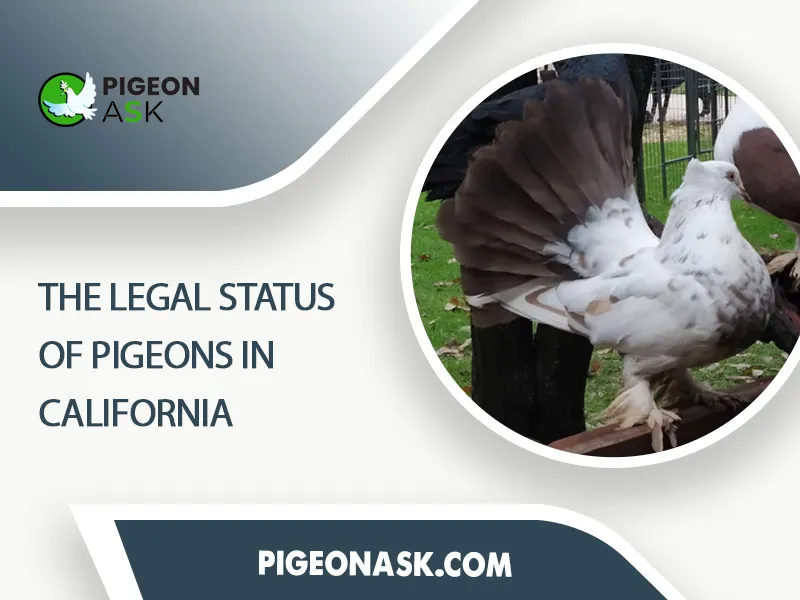
In certain regions of California, it’s not allowed to give food to pigeons in communal spaces. Take Beverly Hills as an instance, where offering food to pigeons in any publicly accessible area or publicly owned land is against the law.
This is because supplying food to pigeons might result in health concerns for the community. Additionally, providing for these birds can cause disturbances by drawing large numbers of them to communal areas, possibly prompting officials to enforce penalties or regulations.
Conversely, the California Department of Fish and Wildlife highlights that various avian creatures are safeguarded under the National Migratory Bird Treaty Act.
California’s own hunting regulations, and additional local laws, prohibiting activities like hunting, trapping, killing, trading, acquiring, or holding these particular wild birds, including their nesting sites, offspring, and plumage.
California Pigeon and Wildlife Legislation
California has several laws and regulations in place to protect birds and wildlife. Some key legislation includes –
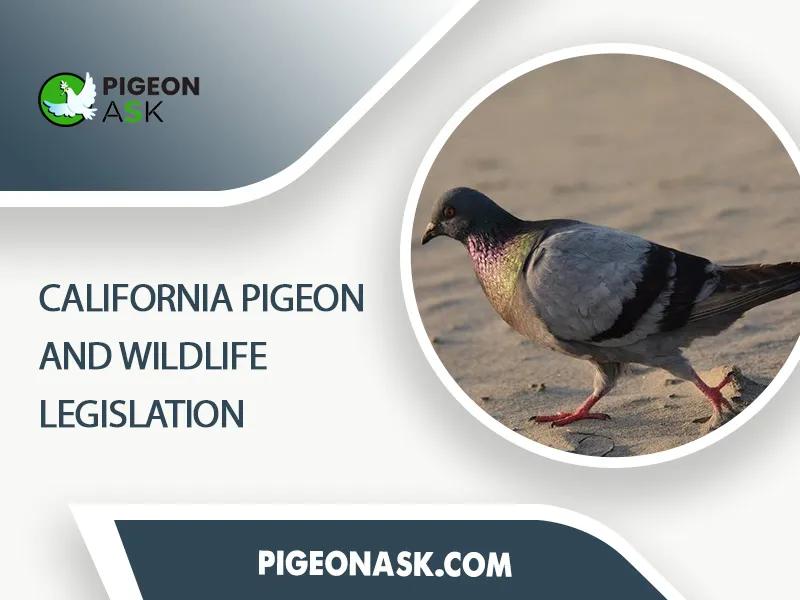
Homing Pigeons
These birds, commonly referred to as racing pigeons, are tame creatures trained for the sport of pigeon racing and frequently nurtured by enthusiasts.
Homing pigeons are legally recognized as personal property. Hence they are safeguarded by legislation that prohibits stealing, injuring, or slaying another person’s tame creatures.
Furthermore, enthusiasts must follow any local laws pertaining to pigeon coops and other facilities, as well as restrictions governing the housing, breeding, and maintenance of homing pigeons.
Feral Pigeons
Federal or state statutes do not protect Rock Doves or Feral pigeons. These are the pigeons commonly seen in urban areas.
Despite not being safeguarded by laws aimed at conserving wildlife due to their status as invasive, non-indigenous birds, wild pigeons still fall under animal cruelty legal protections.
As mentioned earlier, in California, as in other states, it is illegal to purposefully inflict suffering, injury, or death upon any animal, which includes feral pigeons.
Band-Tailed Pigeons
They represent California’s sole indigenous pigeon species and fall under the protection of the state’s wildlife legislation. Additionally, these pigeons enjoy protection at the national level due to the Migratory Bird Treaty Act.
Plus, the state’s Wildlife Authority oversees the regulated hunting of these band-tailed pigeons by setting specific hunting periods and distributing permits for it.
It’s illegal to hunt, capture, own, or injure these birds in any manner not sanctioned by law.
Pigeon Hobbyists
Before starting hobby activities, verify the relevant regional regulations and permit requirements.
Enthusiasts in California must adhere to every existing rule and statute concerning the humane treatment, as well as the propagation and maintenance of pigeons.
They must also consider community laws that can specify restrictions on pigeon accommodation, limit the quantity of pigeons, and address noise and cleanliness issues to avoid upsetting those living nearby.
Local Laws
Municipalities may have specific regulations regarding the feeding of pigeons in public places, pigeons as pets, avian control methods and measures to address health concerns associated with pigeon droppings.
Residents and pigeon hobbyists must be familiar with these local regulations to ensure they remain compliant.
Also, each county in Los Angeles city and subdivisions may have laws regarding pigeons. For example, there is a limit of 25 birds in Burbank, CA.
California Endangered Species Act (CESA)
The act protects all native species of fishes, amphibians, reptiles, birds, mammals, invertebrates and plants and their habitats, threatened with extinction or experiencing a significant decline, will be protected or preserved.
Approximately 250 species are currently listed under CESA and the California Department of Fish and Wildlife oversees its implementation. However, there is no specific mention of pigeons being protected under CESA.
Fish and Game Code
Section 3680 of the 2022 California Code, Fish and Game Code (FGC) is part of Division 4, Birds and Mammals and specifically addresses the taking of racing pigeons.
This section aims to protect racing pigeons from theft and unauthorized taking while also considering situations where the pigeon is abandoned or straying.
We have covered an in-depth article on “Pigeon News”; if interested, you can check this article here.
Consequences of Violating Pigeon Protection Laws
California does not have specific statutes safeguarding pigeons. Nonetheless, there exist rules governing the breeding of pigeons within the state, and breaching local ordinances may result in penalties, court proceedings, and directives to halt the breeding of pigeons.
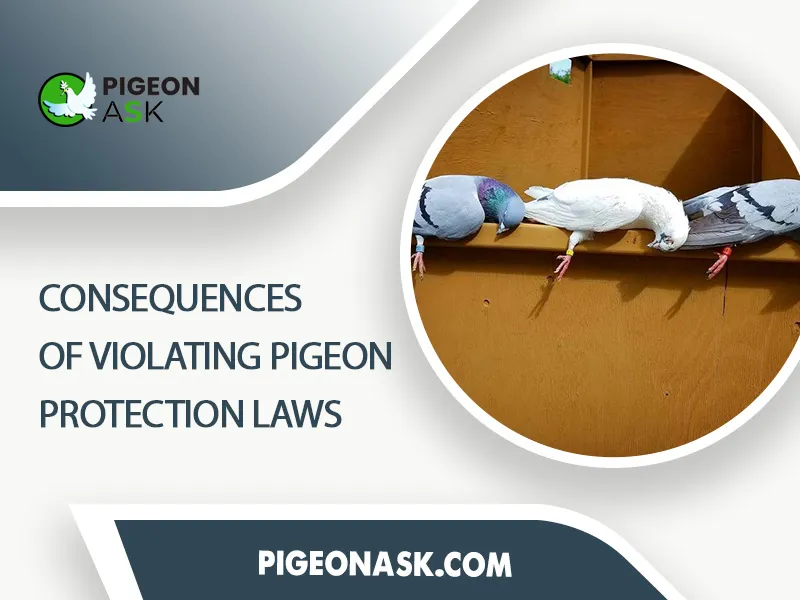
In California, pigeons are classified as wild animals and safeguarded only by laws against animal mistreatment. If one breaks these regulations, they could face lesser charges known as misdemeanors or more serious felony accusations, based on how grave the violation is.
Misdemeanor Penalties
The legislation imposes minor offense sanctions, involving a monetary penalty of no more than $1,000 and potential incarceration for a maximum of 180 days. Additionally, restitution and the expenses related to animal care are applicable.
Injuring animals by using poisonous materials is also considered a lesser offense, subject to penalties including a potential six-month jail term and/or monetary fines up to $1,000.
Failing to properly care for animals, classified as a minor legal violation, can result in a maximum of half a year’s detention in local correctional facilities and/or a financial penalty amounting to $1,000.
Felony-Level Jail Time
In some cases, violations of the federal animal fighting law can result in felony-level jail time.
For example, California Penal Code 597(a) makes it a crime to intentionally maim, mutilate, torture, wound, or kill a living animal.
Which can be charged as either a misdemeanor or a felony and carries a sentence of up to 3 years in state prison, a fine of up to $20,000, or both a prison term and a fine.
Civil Penalties
Beyond legal punishments, breaking specific regulations, like overfeeding birds to make foie gras, may lead to non-criminal fines.
As an illustration, an officer from an animal welfare organization has the authority to hand out a fine reaching $1,000 for each infraction and an additional $1,000 for every day that the offense persists.
The Role of Pigeons in California’s Ecosystem
Pigeons have become an integral part of California’s ecosystem. Here are some aspects illustrating the role of pigeons in California’s ecosystem –
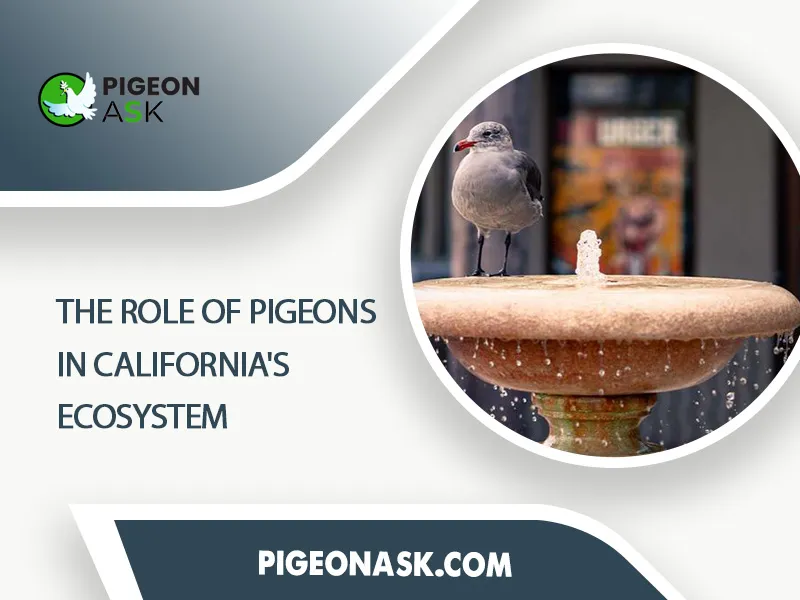
Food Source
These birds are prey for various predators, including raptors such as the falcon and hawk. The presence of pigeons can support urban and rural raptor populations by providing a reliable food source.
Seed Dispersal
Although their role as seed dispersers is often less significant than in other bird species, pigeons can still contribute to the spreading of plant seeds, which could lead to further revegetation in certain areas.
However, because their diet in urban settings often consists of human-provided or waste food, this function may be less pronounced in cities.
Biological Control
Pigeons may help control the populations of certain pests. By eating various invertebrates, they can play a role in keeping the numbers of some potentially pestiferous species in check.
Nutrient Cycling
Bird waste adds beneficial substances to the soil, including nitrogen, phosphorus, and potassium, which enhance vegetation development.
However, these pigeon excretions can be harmful when they are present in large quantities. An excess of these compounds could harm nearby water bodies if they find their way into the rivers.
Urban Environments
Pigeons are common in urban areas, where they feed on food waste and other discarded items. They also help control the spread of diseases, such as salmonella, by consuming contaminated food items.
Migration and Nesting
Band-tailed pigeons, California’s only native pigeon, are primarily migratory species. They use conifers for nesting habitat and rely heavily on acorn mast and nut-producing shrubs and hardwoods for food during the winter and breeding season.
Science and Research
Pigeons are also important subjects for urban ecological and social science research, as they can be used to understand certain ecological issues, such as environmental contaminants and can serve as global and local environmental indicators.
Lead Pollution Tracking
Pigeons have been used to track lead pollution in cities like New York and California, as they can help identify areas with high levels of lead contamination.
Cultural and Recreational Value
Historically and culturally, pigeons have been used for communication, food and as pets. Pigeon racing continues to be a hobby for many.
Watching and feeding pigeons can also be a recreational activity for people, which contributes to the human experience of natural spaces in urban settings.
Final Words
Although pigeons don’t fall under the wildlife category with special legal safeguards in California. But it’s crucial to handle them with kindness and consideration. They contribute significantly to California’s environment and should be spared from injury or disturbance.
Understanding the legislation related to birds in California is essential for both residents and wildlife enthusiasts.
As responsible citizens, everyone should strive to coexist with all creatures, including pigeons and practice humane methods of managing their populations.
By doing our part to protect and preserve these birds, we can help maintain a healthy and balanced environment for future generations.
References
- https://file.lacounty.gov/SDSInter/acwm/215275_pigeon_pdf.pdf
- https://buenvivir.maristas.edu.mx/is-killing-pigeons-legal-in-california/
- https://www.animallaw.info/statute/ca-birds-part-2-birds
- https://www.shouselaw.com/ca/defense/penal-code/597/
- https://wildlife.ca.gov/Conservation/Birds/Band-tailed-Pigeon
- https://nrm.dfg.ca.gov/FileHandler.ashx?DocumentID=109405&inline
- https://academic.oup.com/jue/article/4/1/juy024/5214715
